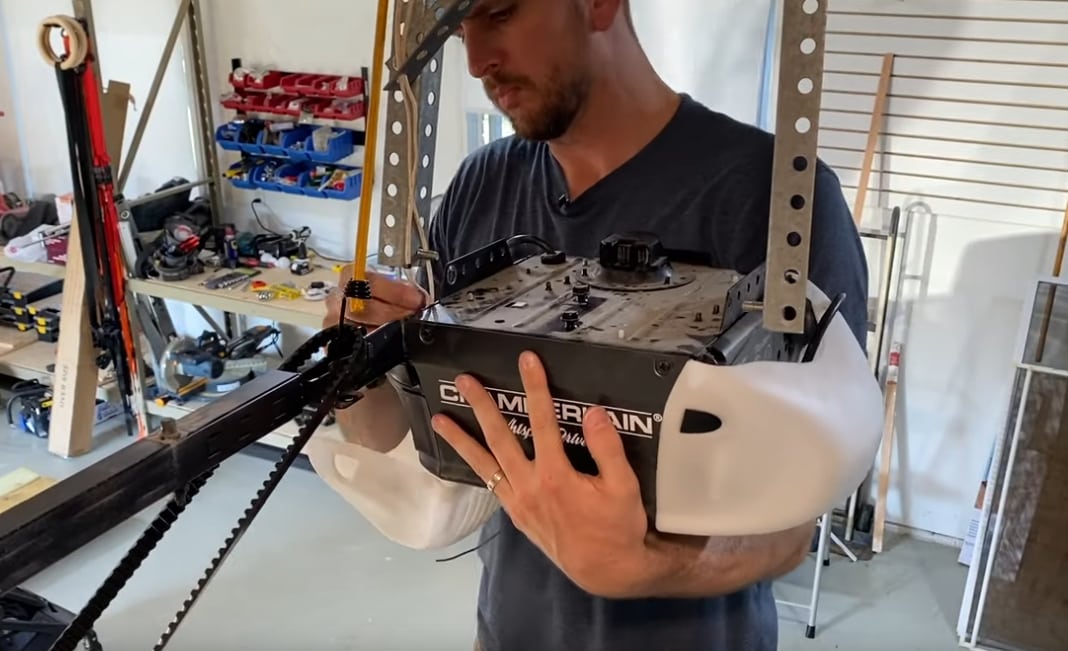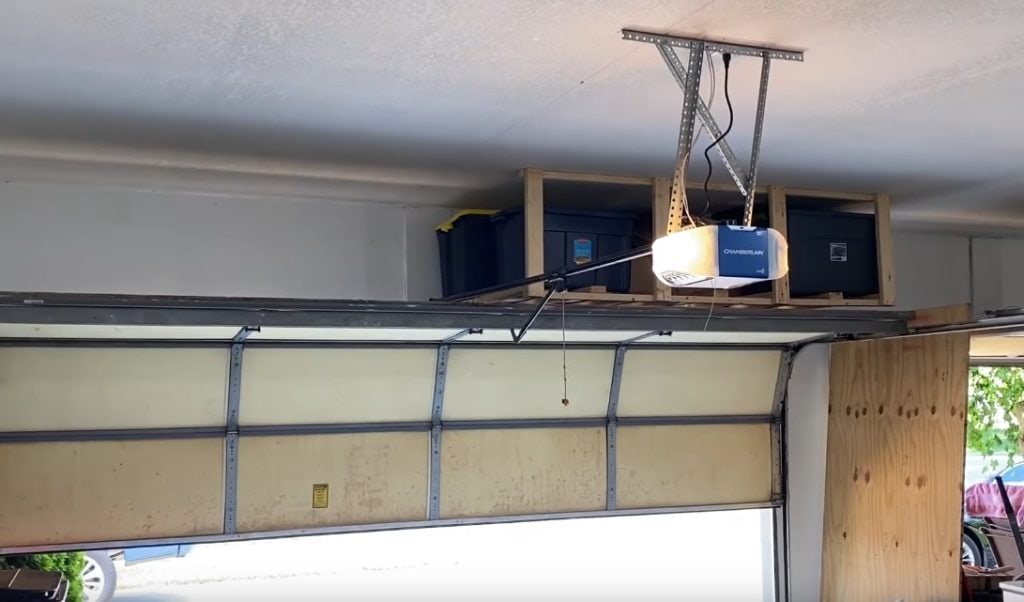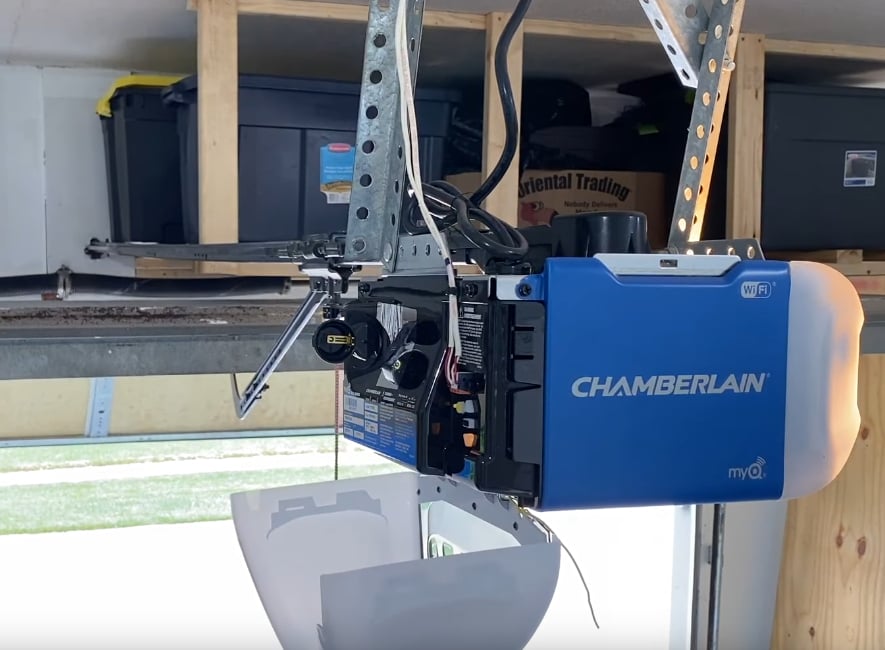How Hard is it to Replace a Garage Door Opener
Replacing a garage door opener is a task that homeowners may need to do for a variety of reasons. The most common reason is that the existing opener has stopped working or is no longer functioning properly. Other reasons might include wanting to upgrade to a newer model with more advanced features, or wanting to change the type of opener (such as switching from a chain drive to a belt drive).
Regardless of the reason, the need to install a garage door opener can be a challenging task that requires some knowledge of electrical systems and the proper tools and materials. In this article, we will discuss the difficulty level of replacing a garage door opener and provide a step-by-step guide to help homeowners through the process.
Difficulty Level of Replacing a Garage Door Opener – New Garage Door
The difficulty level of replacing a garage door opener can vary depending on a number of factors. Here are some things to consider when assessing the difficulty of the task:
• Type of opener: The type of opener you are replacing can affect the difficulty level. For example, replacing a belt drive opener may be easier than replacing a screw drive opener, as the latter may require more maintenance and parts replacement or bracket.
• Condition of the garage door and opener: The condition of the garage door and opener can also affect the difficulty level. If the door or opener is in poor condition, it may be more challenging to remove and replace.
• Homeowner’s level of expertise: The homeowner’s level of expertise can also impact the difficulty of the task. If you are comfortable working with electrical systems and have experience with DIY projects, you may find it easier to replace the opener. If you have limited experience or are unsure of your abilities, it may be more challenging.
Overall, the difficulty level of replacing a garage door opener can vary depending on the specific circumstances. It is generally recommended to hire a professional if you are unsure of your abilities or if the task seems too challenging. The technology behind your garage door remote can help you determine which is the correct one to buy. Before you can enjoy your new garage door opener, you need to make sure it will work correctly.
Tools and Materials needed to Replace a Garage Door Motor
Here is a list of tools and materials that you may need for the garage door opener replacement process:
• Screwdriver
• Wrench
• Ladder
• Protective eyewear
• Replacement garage door opener
• Replacement parts (such as belts, springs, or chains)
• Wire stripper
• Electrical tape
• Wire nuts
• Garage door remote
Some of these tools and materials may be specific to the type of opener you are replacing, so be sure to refer to the manufacturer’s instructions or consult a professional for guidance. It is also a good idea to have a basic toolkit on hand in case you need to make any adjustments or repairs during the replacement process.
Preparation Needed Before Replacing the Garage Door Opener
Before starting the replacement process for your garage door opener, it is important to properly prepare. Here are some steps to take to ensure a smooth and safe replacement process:
1. Unplug the opener: Before beginning any work on the garage door opener, be sure to unplug it to avoid the risk of electrical shock.
2. Secure the garage door: It is important to secure the garage door in place to prevent it from falling or moving during the replacement process. You can do this by using a clamp or other device to hold the door in place.
3. Gather the necessary tools and materials: Make sure you have all the necessary tools and materials on hand before starting the replacement process. This will help ensure that you have everything you need to complete the task efficiently.
4. Read the manufacturer’s instructions: Carefully read the manufacturer’s instructions for the replacement process, including any precautions or specific steps to follow.
5. Clear the area: Make sure the area around the center of the garage door is clear and free of any obstructions that could get in the way during the replacement process.
By following these preparation steps, you can help ensure a smooth and safe garage door opener replacement process.
Step by Step Guide to Replacing your Opener
Here is a step-by-step guide to replacing an automatic garage door opener:
1. Unplug the opener and secure the automatic garage door: Before beginning any work on the garage door opener, be sure to unplug it to avoid the risk of electrical shock. Secure the garage door in place to prevent it from falling or moving during the replacement process.
2. Gather the necessary tools and materials: Make sure you have all the necessary tools and materials on hand before starting the replacement process. This will help ensure that you have everything you need to complete the task efficiently. This is how you will attach the garage door opener to the ceiling.
3. Remove the old opener: Follow the manufacturer’s instructions for removing the old opener, taking care to properly disassemble and remove any parts or components.
4. Install the new opener: Follow the manufacturer’s instructions for installing the new opener, taking care to properly attach and secure all parts and components.
5. Test the opener: Once the new opener is installed, test it to ensure that it is functioning properly. This may involve using the remote control or activating the opener manually.
6. Finish the installation: Follow the manufacturer’s instructions for completing the installation process, including any final adjustments or testing.
7. Dispose of the old opener: Properly dispose of the old opener, following any local regulations or guidelines for disposal of electronic equipment.
By following these steps, you can successfully replace your garage door opener and ensure that it is functioning properly. As always, be sure to follow the manufacturer’s instructions and take all necessary precautions when working with electrical systems and heavy machinery. Make sure the garage door is balanced. Close the door and pull the emergency release cord (always close the door first so it can’t come crashing down!). Lift the door about halfway up and let go.
Safety Considerations
Replacing a garage door opener can be a complex task that involves working with heavy machinery and electrical systems. It is important to be aware of the potential risks and take all necessary precautions to ensure a safe and successful replacement process. Here are some safety considerations to keep in mind when replacing a garage door opener:
• Heavy lifting: Replacing a garage door opener may involve lifting heavy parts and components, such as the opener itself or the garage door. Be sure to use proper lifting techniques and ask for help if needed to avoid the risk of injury.
• Electrical shock: Working with electrical systems carries the risk of electrical shock. Be sure to unplug the opener before beginning any work, and follow all safety guidelines provided by the manufacturer. Wear protective eyewear and gloves as needed.
• Falling objects: When working on the garage door or opener, be aware of the risk of falling objects, such as tools or parts. Keep the area around the door clear and use a ladder or other stable platform when needed.
• Garage door collapse: The garage door itself may be heavy and unstable, and it is important to secure it in place before beginning the replacement process to prevent it from collapsing.
By following these safety considerations and taking all necessary precautions, you can help ensure a safe and successful garage door opener replacement process. If you are unsure of your abilities or the task seems too challenging, it is generally recommended to hire a professional for the job.
Alternative Options to Replacing a Garage Door Opener
If you are experiencing problems with your garage door opener or are considering upgrading to a newer model, there are a few alternative options to consider:
• Hiring a professional: If you are unsure of your abilities or the task seems too challenging, it is generally recommended to hire a professional to replace the garage door opener. A professional will have the necessary expertise and equipment to safely and efficiently complete the task.
• Upgrading to a newer model: If your existing garage door opener is no longer functioning properly or you want to upgrade to a newer model with advanced features, you may want to consider replacing the opener altogether. There are a range of newer models available that offer features such as smartphone connectivity, battery backup, and quiet operation.
• Repairing the existing opener: If the issue with your garage door opener is a minor one, such as a problem with the remote control or a broken belt, you may be able to repair the existing opener rather than replacing it. This can be a more cost-effective option if the opener is otherwise functioning properly.
Overall, these alternative options can help you address any issues with your garage door opener and ensure that it is functioning properly. Be sure to weigh the pros and cons of each option and consider your specific needs and budget when making a decision.
To Sum it all up
In summary, replacing a garage door opener can be a complex task that involves working with heavy machinery and electrical systems. The difficulty level of the task can vary depending on factors such as the type of opener, the condition of the garage door and opener, and the homeowner’s level of expertise.
It is important to consider the potential risks and take all necessary precautions to ensure a safe and successful replacement process. If you are unsure of your abilities or the task seems too challenging, it is generally recommended to hire a professional for the job.
Alternatively, you may want to consider upgrading to a newer model or repairing the existing opener if the issue is a minor one. Overall, it is important to carefully weigh the pros and cons of each option and consider your specific needs and budget when deciding on the best course of action.
Bonus Tips:
Here are a few additional tips and information related to replacing garage door openers:
• Troubleshooting common issues: If you experience any issues with your garage door opener after replacing it, the first step is to refer to the user manual or troubleshooting guide provided by the manufacturer. Common issues include problems with the remote control, the door not closing properly, or the opener not working at all. In most cases, these issues can be resolved by checking the batteries, cleaning the sensors, or making adjustments to the opener’s settings. If the issue persists, you may need to contact the manufacturer for further support.
• Choosing the right replacement model: When choosing a replacement garage door opener, it’s important to consider your specific needs and budget. Belt drive openers are generally the quietest and most expensive option, while chain drive and screw drive openers are generally more affordable but may be louder and require more maintenance. Consider factors such as the size and type of your garage door, the layout of your home, and your budget when selecting the right model for your needs.
• Other products and accessories: Many garage door opener manufacturers offer a range of additional products and accessories to enhance the functionality of their openers. These may include remote controls, keypads, smartphone apps, and a range of sensors and safety features.
• Customer support: If you have any questions or issues with your garage door opener, the manufacturer may offer online resources and support options, including user manuals, installation guides, and troubleshooting tips. You can also contact the manufacturer directly for further assistance.
• Quality garage door opener brands like LiftMaster® provide helpful online guides for situations just like this.
Overall, these additional tips and information can help you get the most out of your garage door opener and ensure that it operates smoothly and reliably.
References:
Is it hard to install automatic garage door opener



